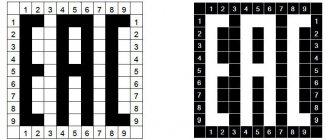Confirmation of compliance. 10/06/2020 | | 4 minutes
( 1 ratings, average: 5.00 out of 5)
Made in China for many people is considered more an indicator of cheapness, but not quality. Meanwhile, in the Middle Kingdom there are serious factories engaged in high-level production! How to obtain a certificate for goods from China to prove compliance with all standards? Is certification mandatory and what does it actually give to the manufacturer? And most importantly, how to go through the procedure legally, but without delaying it for many months? Certification experts explain.
Why is a product conformity certificate required?
This is a barrier to protect the market from low-quality products. Every country has standards to ensure that the consumer buys things or products that will not cause harm.
For example, an entrepreneur launched the production of children's toys. First, experts conduct research and find out whether the toys are made from safe materials. Check that the parts will not be damaged by children's hands. After this, the production receives a certificate of conformity and enters the market. Without testing and permits, it will not be possible to sell such products. This is illegal.
Businesses often use a certificate of conformity in marketing and advertising. Product manufacturers often emphasize that they care about customers and do everything according to GOST. This means that the consumer receives a quality product.
Conformity assessment forms
In most cases, quality and safety assessment is carried out either in the form of certification or in the form of declaration.
A mandatory certificate of conformity is required for:
- auto parts;
- household appliances and electrical appliances;
- lighting;
- bed sheets;
- toys for children;
- children's furniture;
- some types of PPE;
- cement (in the GOST R system);
- And other.
The declaration is issued for the following types of products:
- food products;
- clothing and shoes;
- most cosmetic products;
- packaging materials;
- furniture (except for children's);
- industrial equipment;
- And so on.
What products need to be certified
A complete list of goods subject to certification can be found in Government Decree No. 982 of December 1, 2009. For example, in Russia, manufacturers and importers must certify:
- Kids toys;
- Musical instruments;
- Underwear;
- Weapon;
- Cars.
In addition, if a business trades with countries of the customs union, then certificates with the TR CU designation are valid for these territories. List in the Decision of the Customs Union Commission dated 04/07/2011 N 620.
There is one important point. Sometimes a product does not require a certificate, but a declaration of conformity is required. This means that the manufacturer, and not the certification commission, bears responsibility for product quality. Declarations are needed for household chemicals, mineral fertilizers, and lumber. For a complete list, see the same government decree.
If you want to find out whether a product requires a certificate, you will have to study both documents. Because some groups of goods are excluded from certification, but by decision of the customs union they require a declaration. For example, this happened with tea. In general, when starting a business, you should find out all the requirements and find out whether a product certificate is needed.
What is a certificate of origin
A certificate of origin is a document that indicates the country of origin of the product.
It is usually required by the customs authorities of the importing country to take non-tariff and tariff measures to regulate the import of goods into the customs territory of the relevant country and the export of goods from this territory (for example, to levy a certain rate of import duty, including preferential duties in the case of preferential treatment for goods). On January 12, 2021, new rules for determining the country of origin of goods came into force, which apply to the import of goods into the countries of the Eurasian Economic Union (EAEU).
Types of certificates of conformity
In Russia and the countries of the customs union there are 2 main certificates of conformity:
- GOST R. This is an abbreviation that means state standard. Certificates appeared in the USSR, but now they add the letter P, which shows that this is a modern Russian standard. Registration of such a certificate will cost on average 12-15 thousand rubles.
- TR TS. This is a certificate that is valid in the countries of the Customs Union. It will have to be obtained if the entrepreneur plans to work outside of Russia in the EAEU countries. The cost of such a document will cost at least 50 thousand rubles.
In addition, in some cases other certificates will be needed:
- Fire safety certificate. There is 123-FZ (Technical regulations for fire safety). The document is valid for some products. For example, for linoleum.
- Certificate of compliance with the ISO management system (ISO). Shows that the manufacturer has implemented a management system according to the rules of the International Organization for Standardization. Sometimes this is required by counterparties or rules for sales outside the customs union.
Registration procedure
A certificate can only be legally issued by an agency that has the appropriate accreditation. Without it, the procedure goes beyond the legal framework, and your document may be invalid. Which is fraught with trouble. It is easier to follow the procedure than to violate it.
The algorithm looks like this:
- Submitting an application and package of documents.
- Review of the application.
- Making a decision to issue/refuse.
- Selecting a certification scheme.
- Selection of samples for product research.
- Carrying out quality examination.
- Control of production conditions (if necessary).
- Final preparation of the necessary documentation and certificate.
Depending on the volume of the batch, the type of product and the availability of previously received documents, the process lasts from 3 to 14 days. The process may take longer if on-site events are needed. Their duration depends on many factors. You should ask the specialist accompanying your case for details.
What is mandatory product certification
The products that need to be certified are listed above. That is, without obtaining a certificate or declaration of conformity, selling these goods is prohibited by law.
The Code of Administrative Offenses of the Russian Federation has article 14.44. “Inaccurate declaration of product conformity.” According to this article, if products are put on the market without certification or using false documents, then they face fines:
- 25-35 thousand rubles for officials;
- 300-500 thousand for legal entities.
And if people, animals, plants, property of citizens and the state have suffered due to uncertified products, then the punishment becomes more severe:
- 35-50 thousand for officials;
- From 700 thousand to 1 million for legal entities.
If because of these products someone suffered serious harm to health, then everything can develop into criminal punishment.
The founder of the Vorontsov Cheeses brand, Alexander Vorontsov, believes that certification for the most part rests on the honest word of the business:
“We receive a declaration of product conformity. It must be said that a business, in principle, can easily pass inspection. For example, we send cheese for examination, but who knows whose cheese it is? I can bring it from Italy and send it for examination. But I don't need it. Because if someone gets poisoned by our products, they can get not only a fine, but also a prison term. As a result, certification, of course, is a necessary thing, but the consumer chooses not by documents, but by real quality. Therefore, it is better to maintain quality not only for regulatory authorities"
What problems may arise during certification?
Be prepared that you may be offered to certify a product at a reduced price. As a rule, these are centers that work with violations, for example, issuing certificates without testing samples.
Savings in obtaining a certificate of conformity can lead to large losses. Dubious companies are often excluded from the RosAccreditation register, or customs unexpectedly requests evidence of testing samples in a laboratory.
As a result, the cargo is detained at customs until the importer conducts new tests of the goods and provides a quality certificate. This requires at least 2 weeks, taking into account the wait for new product samples from China. All this time, the cargo is in a paid temporary storage warehouse (TSW).
As a result, you will pay for the delivery of samples from China, the issuance of a new certificate of conformity, temporary storage warehouse services, and pay a fine for providing invalid documents to customs. The result is an impressive amount, amounting to hundreds of thousands of rubles.
We advise you to issue a certificate of conformity in accordance with all the rules. Sometimes you have to pay quite a lot of money for certification, but you can reduce the costs of delivery and customs clearance of cargo. If you find it difficult to complete this task, please contact us. We will answer all questions in detail, for example, how to organize profitable cargo delivery, how to transfer money to China from Russia and back with a minimum commission, and others.
What is voluntary certification
Let's return to the law that regulates goods for mandatory certification. There are products that may not be certified. For example, plywood products, matches, high-quality tableware and various polymers.
But some entrepreneurs undergo voluntary certification for marketing purposes. You can tell customers that the company is so confident in quality that it is not afraid to undergo tests that confirm this. Voluntary certification is carried out in accredited centers according to the rules of GOST R.
In addition to marketing, there are also business goals. Some entrepreneurs themselves order certificates of conformity to gain an advantage in tenders. For example, a school purchases dishes in accordance with 44-FZ. There are two identical suppliers, but one is ready to confirm the quality of the products, and the other is not. Most likely, the school will choose the one who offers a better quality product.
Other companies do this in order to become suppliers to large customers. Sometimes brands, using voluntary certification, set up a filter for counterparties. It works like this: polymers are being purchased, but there is a threat of running into low-quality products. The company announces that it purchases only from suppliers who have a certificate of conformity for their products.
Director of online accounting Nebo Artem Turovets believes that they voluntarily undergo certification for the development of the company:
“Sometimes this is not necessary to win clients or counterparties. For example, ISO 9001 standards really help to sort out a company's internal processes in order to become better and more efficient. You just need to understand that such certification will take a year, and you shouldn’t get it for show. Unfortunately, there are companies on the market that will issue a certificate, but this approach makes no sense. I have an ISO 9001 auditor credential and provide training to bring processes as close to the standards as possible. Perhaps later the company will undergo certification"
Voluntary quality assessment
When the mandatory permit is received, the entrepreneur, on his own initiative, can apply for a voluntary certificate. This document is an additional confirmation of the quality of products from China. In this case, the applicant himself determines which characteristics and properties of the product will be studied and analyzed. A voluntary certificate gives an entrepreneur a number of advantages. For example, it increases trust in the company from investors and end consumers, and allows it to position itself as an open and honest partner. Having a document increases your chances of winning tenders, government procurement, and auctions.
Contact the specialists of the Rosstandart.Info portal to get additional information.
How to obtain a certificate of conformity and who issues it
The process of issuing certificates of conformity for products is controlled by the Russian Accreditation Agency, and certification centers issue conclusions. They are accredited to work officially and without claims from regulatory authorities. The website of the Federal Accreditation Service contains a register of suitable centers and laboratories.
Go to the page, enter the center data and see the result. The main thing is that there is a green icon near the center. This is a designation that the organization is active and the license is in order.
After this, you need to write an application for a certificate of conformity and select samples of the products to be tested. If production is certified, then representatives of the center will come to the company’s territory. If the product meets the standards, the company receives a registered certificate of conformity. Certain products have additional requirements.
Co-founder of Manfas Brewery Alexander Orlov believes that certification is not difficult, but it takes a long time:
“We have to send each type of beer for examination, describe all the ingredients, alcohol content, what container the drink is in, what will be on the label, we also need to provide all the protocols and examination reports. First, the beer is tested in the laboratory, and then also at the Federal Alcohol Regulatory Authority. As a result, everything takes 3-4 weeks. Beer cannot be sold without a certificate, so you have to wait. And this is quite tedious if you have several types of products. On the other hand, I understand that certification in our area is necessary so that low-quality beer does not enter the market."
Oleg Nevorotov, co-founder of the Upmarket marketplace sales management agency, explains why you need to seriously prepare for certification:
“Suppose we decide to introduce new goods and find a supplier in China that suits us, but when the first order arrives at the border, certificates will be required for customs clearance. You can obtain them by testing the product in accredited testing laboratories. And the laboratory, in turn, needs to make sure that it is examining a sample from the manufacturer who will subsequently produce a batch of this product. Just a couple of years ago, it was enough for the applicant to state that the goods were from factory X, and this was taken on faith. Now the procedure has become more complicated: first you need to make and pay for an application for certification, then the certification body issues an official request indicating the application number, then when sending the factory, it must accurately indicate this number in its accompanying documents, send a sample from the legal entity that is engaged in production, and at the same time indicate the exact details of the applicant. Considering that we deal mainly with foreign senders, mistakes often occur, and we have to start the process again or exchange correction letters for a long time, wasting time and money on this unproductive process. Thus, in practice, receiving and transferring samples to the laboratory, even from experienced companies, can take about 3 weeks. Therefore, certification is the first thing we recommend that future sellers on marketplaces think about.”
To obtain a certificate of conformity you will need a standard package of documents:
- Statement;
- TIN, charter, extract from the Unified State Register of Legal Entities or Unified State Register of Individual Entrepreneurs, OGRN, individual entrepreneur registration documents;
- Company details;
- Technical requirements to be tested.
By the way, if the company has changed its legal address, it will have to undergo certification again.
Set of documentation for inspection
To become a certificate holder, an entrepreneur must provide the following:
- Name and description of the product, its properties;
- Color image of the toy;
- Operational documents;
- Information about components, materials, raw materials;
- Design documentation, technical description of the standard sample;
- List of standards that products must comply with;
- Contract for the supply of products;
- Application for holding.
If you provide some documents in Chinese (for example, foreign certificates, technical descriptions), you must provide them with translations into Russian. Translations are not required to be certified by a notary, but they must be available for the correct execution of permitting documentation.
What does a certificate of conformity look like?
The certificate of conformity for products is issued in paper and electronic forms. In Russia, the form is in force, which is established by Order No. 3725 of the Ministry of Industry and Trade dated October 28, 2020.
The certificate of conformity contains the following information:
Certificate registration number. Number format RU C-XX.YYYY.A.00001/ZZ:
- RU is a designation for the Russian Federation.
- C—the number belongs to the certificate of conformity.
- XX is the code of the country where the product for certification was produced. These are letters of the Latin alphabet, and for countries there is an All-Russian Classifier. For example, the letters DE stand for Germany.
- YYYY — Certification authority code (last 4 characters from the register of accredited persons).
- A - means that the product is in a single copy. For mass production, the letter B is used.
- 00001 — serial number of the certificate in the registry.
- ZZ - the last 2 digits of the year when the certificate was issued.
Applicant. A company that sends products for certification. Manufacturer. Information about the manufacturer and products that need to be certified. If the company is not located in Russia, then indicate the code GLN. Certification body. All information about the center that issues the certificate: from name to legal address. Full information about the product : name, brand, codes, number and lot size. If there is too much information, then an application is added to the certificate. OKPD code 2 (for Russia) or TN VED EAEU (for the Customs Union) . Compliance with the requirements. They prescribe the regulations that are adopted in Russia for the certification of these products. Grounds for issuing the certificate. This field indicates information about research or test reports that confirmed that the product successfully passed the test. Additional Information. For example, that the company undergoes voluntary certification. Validity period of the certificate. Signatures of the head of the accreditation center and the experts who conducted the tests.
Required documents
To obtain a certificate of compliance with the technical regulations of the Customs Union for Chinese goods brought to the Russian Federation, you must collect a package of documents:
- Copies of the Applicant’s constituent documents, his details.
- Manufacturer's details.
- Copies of contracts.
- Description of products, appearance and catalogs, scope of application.
- Technical and operational documentation.
Specialists will help you determine the HS code and OKP of imported products, where and what certificates you need to obtain, tell you how to certify goods from China, advise on collecting documents and answer all your questions.
Validity period of the certificate of conformity
In Russia, certificates of conformity are issued for a period of 1 to 5 years. For example, if the product passes according to GOST R, then the maximum period is up to 3 years. This is enshrined in the law “On Technical Regulation”.
If products sold in the countries of the Customs Union undergo certification, then the validity of the documents can be up to 5 years. The main thing to remember is that you will have to undergo verification every year so that the certificate is not suspended or revoked.
If there is a need to check the validity period of the certificate, use the service from Rosakcreditation. Enter the document number and get information about the document:
- Green circle with a tick - the certificate is valid.
- An orange circle with a checkmark means the certificate has been stopped. The reason is indicated in the description.
- Red circle with a tick - the certificate has been cancelled. The reasons and grounds are stated in the description.
- Archived—the certificate or declaration has expired.
How much does it cost to get a certificate?
The cost of certification of Chinese products is not fixed and can range from 5 thousand to 100 thousand rubles. Costs are calculated individually. The final price depends on the following factors:
- Product category;
- Complexity of laboratory tests;
- Volume of goods inspected: series, batch, unit;
- The need to check production conditions, compliance with the quality system;
- Certification scheme.
In some cases, it is necessary for a specialist from a certifying organization to visit the client. This aspect also significantly affects the cost.
You can save money when receiving a certificate if your documents are initially filled out correctly. Errors and incomplete data can result in double costs. Therefore, it is better to contact a specialized organization.
Is it possible to fake a certificate of conformity?
This is difficult, but entrepreneurs know that there are organizations on the market that offer to buy fake certificates and declarations. It will be possible to work with such documents before the first inspection, and Rosakkreditatsiya annually conducts dozens of inspections to identify counterfeit certificates.
Recently, trading platforms have also joined the fight for the quality of goods. for example, in the spring of 2021, Ozon and the Federal Accreditation Service announced cooperation. The marketplace will add data about certificates and declarations to product cards. This will help identify sellers with low-quality goods.
Oleg Nevorotov believes that consumers also benefit from certification:
“Now that the certification process has become more transparent, consumers of products can be sure that if a product has a certificate of conformity, then it was real samples that were tested, and not the first ones that came across or similar ones, as often happened before. In addition, laboratories are constantly inspected, and those companies that violate legal requirements cease their activities. On the one hand, this leads to an increase in the cost of the certification process, but on the other hand, it makes the attitude towards it more trusting and meaningful, which is much more important for the market, as it gives the consumer confidence that the products comply with existing standards.”
In general, certification protects the market from low-quality goods, and this encourages the production and sale of goods that will not harm the consumer.
Features of the ST-1 certificate
According to the Customs Code of the Eurasian Economic Union, adopted on April 11, 2021, when importing / exporting goods crossing the national borders of the member states of the EAEU Customs Union, including the Russian Federation, it is necessary to draw up a document indicating the country of production of the goods.
To facilitate trade in the CIS Customs Union (EAEU), a certificate of origin ST 1 of the Russian Federation is issued for products manufactured in the Commonwealth states.
Rejection of an application with a foreign product
If the tender includes a complete ban on the purchase of foreign goods, the application will be rejected. If there is a price preference for a Russian product, then everything depends on the share of the specified one. If the auction provides for a complete ban on the purchase of foreign goods, the application will be rejected. If the customer sets access restrictions, they are applied according to the “third wheel” principle. If at least two applications are received from different manufacturers, in which the goods are manufactured in the territory of the Russian Federation or the EAEU, and the application contains an ST-1 certificate, the customer rejects all other applications. If there are no two applications that meet such requirements, then the customer does not reject anyone, and the admission conditions established by Order of the Ministry of Finance of Russia dated June 4, 2018 No. 126n are applied to the participants.
Licensing of import and export in China
To support long-term sustainable development, China is actively trying to transition from an export-driven economy to a growth model driven by domestic demand and consumption.
Currently, private consumption in China accounts for only 35% of total gross domestic product, the lowest among Asian countries. To address this problem and stimulate domestic spending, the country plans to double the per capita income of urban and rural residents in 2010 by 2020.
Once this goal is achieved, purchasing power in the Chinese market will be freed up to 64 billion yuan (US$10 billion). This development will create huge opportunities for foreign investors looking to sell in the Chinese market.
For those who want to do business with China, it is very important to understand the country's import and export regulations. It should be noted that entities and individuals who intend to import and export goods to China must first register with the Ministry of Commerce (MOFCOM).
Goods import system
China classifies its imports into three categories
- Allowed
- Limited
- Forbidden
Most imported goods fall under the authorized category and MOFCOM has implemented an automatic licensing system that controls the import of goods. MOFCOM and the General Administration of Customs (GAC) have jointly launched a catalog of products related to annual automated licensing.
Certain goods subject to automatic import licensing are exempt from licensing (eg, imported goods for processing and re-export; imported goods of foreign companies for their own production as part of their overall investment). However, it should be noted that if the imported goods for the processing industry are no longer exported, the license must be applied retrospectively.
Each automatic import license is valid for six calendar months and, in principle, each license must only be used for one product. However, multiple licenses can be obtained under a single import contract and, for some products, one license can be used for up to six shipments.
Restricted Items
Restricted goods are controlled by quotas and licenses. Reasons for restricting these goods include maintaining national security or the common good and protecting natural resources.
Import of goods requiring licenses
MOFCOM, GAC and the General Authority for Quality Supervision, Inspection and Quarantine (GAQSIQ) jointly released an annual catalog of imported goods requiring licensing. In 2013, imported goods requiring licensing are divided into two categories:
- Used mechanical and electronic products
- Substances that destroy the ozone layer
An import license is usually valid for one year.
Import of goods under tariff quotas
Wheat, corn, rice, sugar, cotton, wool and combs are regulated by Tariff Tate Quota (TRQ). Under TRQ administration, imported goods within the contingent are subject to lower customs duty, while imported goods outside the contingent are subject to higher customs duties.
Firms seeking to import under the lower tariff quota must apply to MOFCOM for the allocation rate between 15 and 30 October each year.
Products not allowed
Items such as waste and poisons are prohibited from entering China. The Ministry of Foreign Trade and Economic Cooperation (MOFTEC, the predecessor of MOFCOM) and the General Administration of Customs (GAC) worked with other government agencies such as the General Administration of Quality Supervision, Inspection and Quarantine (GAQSIQ) to create numerous catalogs of goods prohibited from being imported into China .
Goods Export System
China has implemented an export licensing management system for goods subject to export restrictions. There are three types of export licenses in China:
- Export quota license (eg grain, wheat, cotton, crude oil)
- Export quotas (for example, magnesium raw materials)
- Export licenses (eg beef, pork and chicken)
MOFCOM and GAC have jointly published a catalog for export items that require licensing on an annual basis. As of 2013, there will be 48 categories of goods that are subject to export licensing.
Each export license can only be used for one product. However, under certain conditions, a license can be used for multiple shipments (up to a maximum of 12), including goods from foreign companies that are subject to export licensing management.
The longest validity period of an export license can be six months and must be used within the year of issue. If the export license is not used within the validity period, the entrepreneur can request an extension of the export license and a new export license will be issued
Import inspection/certification
The Chinese government has ordered comprehensive inspections and certification requirements for imported goods. Some goods must be inspected upon arrival or accompanied by official certificates recognized by the Chinese government.
The General Administration of Quality Supervision, Inspection and Quarantine (GAQSIQ) directly reports to the State Council as the administrative department, which is responsible for quality control, inspection, animal and plant quarantine and food safety for all goods that are transported across China's borders.
The China Compulsory Certificate (CCC) is a certificate or label required by the Chinese government for many products (including imported ones) that have been sold in the domestic market since May 2002. The CCC covered product catalog has been approved and published by GAQSIQ and CCA.








